- Scott Mckeating
- Albums and Singles
Setting itself in motion with pork scratching percussion loops like Her Majesty's Prison breaking out the robot guards, "Black Balloons" is the sound of low quality speed psychosis. It is a rut of club hedonism before an antisocial bass instigated mental collapse, the beat drop prompting one of those everyone-starts-moving-at-the-same-moment moments.
The non-LP B-side cut is 100% Working Man's Club video console acid, packing more swing than Mr. Bumble's hand. "Death by a Thousand Lashes" runs up and down the grooves, a skewed snakes and ladders game of bass, drum and synth. Behind its brief spiky percussion and bent reality bass there are plenty of left turns and plummets.
Read More
- Administrator
- Albums and Singles
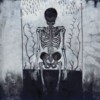 Santiago, Chile's Un Festin Sagital weave electro-acoustic sounds with rock instruments and voices to create this unpredictable but compelling album. Harrowing background noises share space with patient guitar motifs for songs that are constantly churning and shifting into different modes and styles. Hints of progressive rock and traditional music serve to heighten and confound expectations, making this album a deliriously engaging experience.
Santiago, Chile's Un Festin Sagital weave electro-acoustic sounds with rock instruments and voices to create this unpredictable but compelling album. Harrowing background noises share space with patient guitar motifs for songs that are constantly churning and shifting into different modes and styles. Hints of progressive rock and traditional music serve to heighten and confound expectations, making this album a deliriously engaging experience.
The first few songs are particularly unstable. "Epitafio al Delirio de la Permanencia Part 1" goes through several stages, beginning with a distorted rumble, an urgent organ, and competing voices. The song becomes airy with light drones and a repetitive guitar motif that keeps the song from floating away. Squeals and discordant piano take over before the band goes into an old-fashioned song with saxophone. Metal guitar riffs come in later, and the whole song ends with a whimsical carnivalesque organ section. "Part 2" is initially a more introspective affair with light piano and a low-key electronic background. It builds to a harried, schizophrenic peak in the middle of the track and coasts to a finale against a halluncinatory backdrop of piano and constant yet subtle synthesizer pitches. "L'Age Delicieux (la Revolución Perenne)" is organized similarly to the first two tracks, but relies more on percussion and haunting vocals.
The last three songs have the most consistent structure. The briefest track at just under a few minutes, "¡No Hay Coristas!" could come from the soundtrack to an old spaghetti western were it not for its electronic ending. Although "La Dignidad del Espiritu Bestia" starts with violin and hand drums, it builds into a kraut groove with metal overtones before gradually fading into a long, delicate passage. "Destierro" is a ballad with sci-fi synthesizers and guitars. It has a couple of frenzied moments but is mostly pretty mellow, a come-down from the rest of the album’s hyperactive mood swings.
Even though many of the songs are in a constant flux, they never get unintentionally overwhelming. They work because the changes never seem forced or arbitrary but instead flow naturally from one idea to the next, even when the differences are extreme. The band's excellent musicianship makes all of this possible, bringing plausibility to strange music while never alienating the listener.
samples:
- Epitafio al Delirio de la Permanencia Part 1
- Epitafio al Delirio de la Permanencia Part 2
- La Dignidad del Espiritu Bestia
Read More
- Administrator
- Albums and Singles
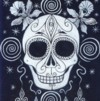 Tuvan throat singer Soriah gets some help on analog synthesizer from Lana Guerra of Power Circus for this recording that leads the deceased back to the world of the living. Translated as "Offerings of Light to the Dead," it is a mesmeric beacon that creates an atmosphere all its own.
Tuvan throat singer Soriah gets some help on analog synthesizer from Lana Guerra of Power Circus for this recording that leads the deceased back to the world of the living. Translated as "Offerings of Light to the Dead," it is a mesmeric beacon that creates an atmosphere all its own.
The 30-minute title track has three distinct movements. The first begins quietly with rattles, subtle synth washes, and occasional low-end rumble. Sometimes the bass can get a little out of control, but keyboards and other odd bits mostly manage to balance the mix. After the querulous keyboard squeals become more pronounced, the voice takes stage with ominous throaty drones floating in a vast space. Here the low end interferes a little bit with the hypnotic allure of the vocals, but at the end of the first section, it is gone for good.
The second section begins with rattles like chattering teeth, echoing whispers and groans, channeled lightning, and synth accents. The bass is matched more effectively with the vocals in this part, immersing me much deeper into this strange crossroads between the worlds of the living and the dead. Throwing up ragged rhythms and teases of melody along the way, it ends in electrical screams and revolving shapes of white noise. Constrained shouts, footsteps, and bass like a loose wire begin the last and most frantic movement, building into a cacophony of chirring electronics and warping growls. Yet the song ends with four minutes of light bells, a droning voice, and complementary electronics, the most outright mystical part of the song and its most soothing.
The second track is only half as long. Named after a Oaxacan grasshopper that forms a sizeable portion of that culture's diet, "Esqueleto de Chapulin" has drones, insect-like rattles, and a voice a bit closer to the audience, though not exactly intimate. While the song goes through several phases, its brevity compared to the first one makes it a little more, er, digestable if the thought of a half-hour journey through the realm of the dead seems a daunting place to start.
Both songs are equally fascinating. Together, they create a unique world of sound as ritual that is truly transportive. I can only think that if this is an offering of light, the darkness must be unfathomable.
samples:
- Ofrendas de Luz a Los Muertos, excerpt 1
- Ofrendas de Luz a Los Muertos, excerpt 2
- Esqueleto de Chapulin
Read More
- Administrator
- Albums and Singles
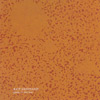 This limited edition album explores the fine details of unidentifiable field recordings; each manipulated and tinkered with until all that is left is the ambient character of those sounds. As with all good concrete inspired works, the music here is far removed from reality but it is still almost tangible in a physical, solid sense. I just want to run my fingers along the music, strange as that sounds.
This limited edition album explores the fine details of unidentifiable field recordings; each manipulated and tinkered with until all that is left is the ambient character of those sounds. As with all good concrete inspired works, the music here is far removed from reality but it is still almost tangible in a physical, solid sense. I just want to run my fingers along the music, strange as that sounds.
It is remarkably cold-sounding music for an album called Spots in the Sun. Granted a sunspot is a relatively cold area of the sun but it is still an unimaginably hot and furious place. However, the grainy rumble of the opening piece lacks any sort of warmth or violence whatsoever. Here and throughout the album, spines of sound grow like crystals on a Petri dish rather than pulse and erupt like emissions from a star. The sound is almost microscopic in character.
Although it is awfully Copernican of me to think that Shoemaker is referring to our sun; this could be his interpretation of light from distant stars. Indeed the huge feeling of space that his music evokes supports this notion. The pauses between sounds go so far beyond pregnant as to being stillborn. The elongated near-silences in the second piece make the shards of sound present in the piece loom imposingly over me. The long piece evolves slowly, the near-silences becoming scratchy cascades of sound and a variety of unusual and unexpected noises bubble and explode out of the mix. A weird, echoing segment of this piece sounds like some bizarre combination of fairground game and a tropical house in a zoo.
The third and fourth pieces continue in the same vein. The idea does not wear thin because I am not quite sure what the idea is. The sound is constantly shifting, leaving no time for extended contemplation as to what the recordings may be or for the noises to become in any way tedious. There is always something that I had yet to notice going on, sometimes even what turns out to be the most dominant sound in terms of volume gets ignored in favour of the smaller sounds.
It must be said that Spots in the Sun is not the sort of album that should be just put on in the background, I thought it was mediocre at best until I actually sat down and engaged with it. The curious blending of sounds makes for repeatedly rewarding listening experiences; there are so many little details that only total immersion reveals them. It is not a far cry from The Hafler Trio or Shoemaker's label mate Matt Waldron.
samples:
Read More
- Administrator
- Albums and Singles
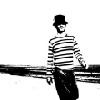 Solo vocal performances are a naked musical form by definition, but this Richard Youngs vinyl re-release (from a limited CD-R run in 2004) appears that little bit more exposed than most even without the need for conventional lyricism.
Solo vocal performances are a naked musical form by definition, but this Richard Youngs vinyl re-release (from a limited CD-R run in 2004) appears that little bit more exposed than most even without the need for conventional lyricism.
Commencing with the 20 minute "Summer's Edge," Youngs manages to instil his solo vocal performance with a contemporary feel, despite it being constructed from a single element. Despite its roots lying in the most traditional of all music forms, there is something about this piece that places it firmly in the now. His delivery of the words seems to encircle the mind, the track becoming more a meditative consciousness-loosening mantra than a narrative or insular state of the union. Youngs extends notes here and there, his delicate voice taking great care with the words he employs. It is this care with the words that makes the song's transformation into something beyond words such an unexpected alchemical process; it is the listening process, the personal involvement given to the record that charges this change. His voice is the same at the end of "Summer's Edge" as it was at its beginning but the consistent turns of phrase almost begin to lose their sense in the repetition: the words becoming more a subtly varying flow of sound rather than stream of words structured into a melody.
While it becomes more difficult to cling to onto the words—instead of literally going with the flow—the overall feeling of an idealistically magnificent loneliness (if such a thing can possibly exist) still remains. Richard Youngs vocal is fragile enough here to be rendered incapable of indulging in effusive sentimentality, even the touch of cold echo on "No Longer in this Perdition" can not harden the man. "Garden of Stones" is the most rooted piece here, encircling phrases painting a picture of the slow impending collapse of sky, earth, and nature. The images as strong as the melody this closer grounds the listener, easing the path back to words and music from something beyond.
The sense of vulnerability and intimacy is clear on these three pieces, despite the record not being an obviously personal affair. With the three tracks here feeling like a like period of grace where he lets us into his confidence, with his shields down Summer Wanderer is a taste of Youngs' interior world in its most melancholy moments.
samples:
Read More
- Administrator
- Albums and Singles
 Looking at it objectively this collaboration between the veteran American 'industrial-tribal' percussionist Z'EV and the German ritual dark ambient duo of Frank Merten and Henry Emich, aka Herbst9, seems a perfect recipe for a successful collaboration. The idea of H9's deeply harmonic and ritual dronescapes supported by Z'EV's richly rhythmic and complex percussion is something of a mouth-watering prospect for me.
Looking at it objectively this collaboration between the veteran American 'industrial-tribal' percussionist Z'EV and the German ritual dark ambient duo of Frank Merten and Henry Emich, aka Herbst9, seems a perfect recipe for a successful collaboration. The idea of H9's deeply harmonic and ritual dronescapes supported by Z'EV's richly rhythmic and complex percussion is something of a mouth-watering prospect for me.
Indeed I am happy to report that the result more than lives up to the promise: the percussive authority of Z'EV's rhythms are an excellent structural counterpoint to Herbst9's beautifully dense and deeply subterranean freeform synthesiser drones, whistles, scratchings and scrapings. H9's music is the darkness from the deep and hidden places of the world made substantial, the inhalations and exhalations of the very earth beneath our feet, and the steam and bile of nature's eruptions; Z'EV's contributions are the audible pulse and heartbeat, a measure of the inner moods and caprices of our planet. It is a benighted alien world down there, far from the light and warmth of the sun and rarely glimpsed by humans; coldly cavernous spaces inhabited by troglodytic chirpings, scrapings, creakings, skitterings, and demonic mumblings, hugely amplified both by the cathedral acoustics and the imagination. It is also the seismic upheavals and the unseen rockfalls, the slippages of faultlines and the forceful opening up of fissures. Add in to the mix a certain sense of endarkened and heated closeness, along with an oppressively hellish weight, both in terms of the sheer heavy physicality and the layers of aeons that have piled themselves on top of each other ever since time began—the latter being especially reinforced by the earthiness of Z'EV's percussive backdrop, propelling one backwards to a more 'primitive' era, perhaps when the world was younger and less seismically stable.
It is certainly very darkly evocative and unearthly, bringing to mind all the above and more; there is plenty here to spark the imagination. The music is a constantly shifting tableaux of deep dank caverns, dripping water, disembodied eyes staring out from the Stygian gloom, legions of shuffling creatures in untold numbers and the glow of ever-burning fires suffusing the smoke-filled subterranean environs—plus it is everything I imagined a Bosch painting brought to life would be like: a spine-shivering nightmarish blend of the real, horrific, and phantasmagorical.
Moreover, one of the more pleasing aspects about this is the seamlessness with which the two sets of artists have integrated their contributions into the other's. People could be forgiven for thinking that they all worked together in the same studio rather than the thousands of miles apart they actually were. It is pleasing to hear an album where no single element is allowed to either overpower or undermine any other; the music develops along natural, organic, and cooperative lines, resulting in a completely holistic musical entity, in a reflection perhaps of the bleak subterranean world it describes. The music is both lean and spare and possessed of a sense that it contains nothing extraneous or superfluous—just like craftsmen the artists have carefully sculpted their material, retaining only the most essential elements and rejecting everything else.
For my part though, the ultimate test is whether any particular album can bear repeated hearings without it becoming palling and tiresome—I must have heard this album about four or five times during the course of writing this review and I have to admit that it worked its rhythmic ambient magic every time and I have no doubt that it will continue to do so.
Samples:
Read More
- Administrator
- Albums and Singles
 This two disc set explores the music of 1970s Nigeria in the period after the Biafran war. It demonstrates a fresh national confidence and a variety beyond the juju music that most Westerners associate with the country. It also reveals Celestine Ukwu, a dazzling star who would die too soon.
This two disc set explores the music of 1970s Nigeria in the period after the Biafran war. It demonstrates a fresh national confidence and a variety beyond the juju music that most Westerners associate with the country. It also reveals Celestine Ukwu, a dazzling star who would die too soon.
There are a huge variety of mind-blowing sounds in the 26 songs on Nigeria Special. I have spent a month with them and keep finding new favorites. The funk of The Don Isaac Ezekiel Combination is crisp and rousing. The Semi Colon (the ever-eccentric and self-praising Lasbrey Colon) flits between genres, referencing Fela Kuti's vocals, a 4/4 beat and wicked guitar. The Nigerian Police Force Band's “Asko Mi Ni” (This is my time) bursts with taut confidence and a superb highlife blues feel.
In 1965, ex-wrestler Sir Victor Uwaifo & His Melody Maestros scored the first gold disc in Nigeria. In his career he forged the Akwete highlife style, and then combined that with US soul, before he began to interpret ancient Benin court music with his quasi-psychedelic guitar. Here Victor and band perform their take on a traditional religious ode produced for his appearance at Expo '70 in Japan. In contrast, "Feso Jaiye" (Take Life Easy) by The Sahara All Stars of Jos starts as a trumpet-driven highlife piece before mutating into subterranean Afro-jazz. Also here is probably the only piece of music recorded by Leo Fadaka & The Heroes: a charming concoction with scratch guitar, wah wah, and cool drum breaks.
In the midst of such treasures, the major find is Celestine Ukwu, who made six LPs for Philips but was killed in a 1977 car crash. I am sure he could have enjoyed success beyond his homeland. Actually, if you would give me six months start on the quest to find all his albums I'd appreciate it. On the 1974 track "Okwukwe Na Nchekwube" (Faith and Trust) Ukwu's voice floats over an ultra soothing guitar line. He looks like a prince and his relaxed style effortlessly generates a powerful and positive vibe. I can't create a 45 second sound sample here that does justice to the way the song builds slowly and naturally before he starts singing. Nigeria Special is a snapshot of musical obscurities from a time when young groups influenced by psychedelic rock and pop rubbed shoulders with old-style highlife bands. The CD package comes with a brilliant 16 page booklet and the set is also available on vinyl in two gatefold sleeves. Arraino!
samples:
- The Hykkers - I Want a Break Thru
- Sir Victor Uwaifo & His Melody Maestros - Osalobua Rekpama
- Godwin Ezike & the Ambassadors - Torri Wow
Read More
- Administrator
- Albums and Singles
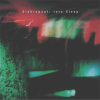 If countries and regions were to be judged solely on the kind of music emanating from within its borders then Scandinavia would be deemed something of a bleak and minimalist place what with all the dark ambient acts it harbors. This disc, from Sweden's Diskrepant, adds further disquietude to the country's musical reputation with a foray into a strange, exotic but sparsely inhabited and twilit world rarely trodden upon by human feet.
If countries and regions were to be judged solely on the kind of music emanating from within its borders then Scandinavia would be deemed something of a bleak and minimalist place what with all the dark ambient acts it harbors. This disc, from Sweden's Diskrepant, adds further disquietude to the country's musical reputation with a foray into a strange, exotic but sparsely inhabited and twilit world rarely trodden upon by human feet.
Per Åhlund, the moving force behind Diskrepant, creates extremely pared-down soundscapes utilising both analogue and digital sythesised sound sources in alliance with acoustically- and electronically-sourced audio recordings, which have been further enhanced, looped, distorted, processed, and stretched through effects modules. The resulting minimalist textures give the impression of a world not quite properly formed or still in the stages of creation, where the edges are still fuzzy and what shapes there are haven’t quite achieved solidity or dimensionality. Trying to get a firm grasp is often impossible, as everything seems to be composed of mist and insubstantiality; sounds fade in and fade out again just as quickly, constantly shifting and metamorphosing. Some of the sounds are obvious while others are barely on the verge of audibility, creating layers of abstract complexity that manage not to actually clutter up any of the spaces. Indeed these pieces are subtle, very understated, and quietly insistent; what’s here almost seems to live in the apparent void between musical notes, in other words if you took any example of music apart this is what would be found existing in the spaces between the crotchets, the quavers and semi-quavers.
Abstract these three pieces may be, but nevertheless they seem to be peopled by both the familiar and the eerily exotic, the whole dyed with colours as yet unnamed and unseen, and composed of substances as yet undiscovered. This is a hypnotic dreamworld where the impossible is entirely possible and whatever reality impinges itself on the listener is nothing but plastic mirage which can be readily molded according to desire and inclination. Diskrepant’s music appears to be more about potentialities and possibilities than actualities, and almost requires an active form of interaction in order to fully engage with it; nothing has taken on its final unalterable form yet and there is still room for the introduction of new elements to help give it shape.
If I was to apply words like ‘formless’ and ‘shapeless’ to Into Sleep then they must be seen not in a negative context but rather as a means to express the fullest extent of those potentialities and possibilities noted above – any potential listener can stride through these sonic landscape paintings and can make of them whatever he/she wants; the forms just need to be called forth and with that it’s made real. In this sense then the formless and shifting world portrayed here by Diskrepant is nothing more than an invitation to participate in an act of creation, to give form to possibilities and to bring forth the potential seeded throughout the three pieces; and that, for me, is the unique beauty inherent in this music.
Samples:
- Apparatus Like Womb
- Awaking Amydala
- Paradoxical Sleep State Ends
Read More
- Administrator
- Albums and Singles
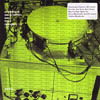 As Sub Rosa's venerable series of anthologies continues at a rapid pace they still continue to both cite important classic artists in the field as well as draw attention to those who may have been overlooked by the ravages of time. It takes a brave curator to put the likes of Claude Ballif and Charlemagne Palestine alongside Sutcliffe Jugend and Masonna, but the tradition of excellence continues.Sub Rosa
As Sub Rosa's venerable series of anthologies continues at a rapid pace they still continue to both cite important classic artists in the field as well as draw attention to those who may have been overlooked by the ravages of time. It takes a brave curator to put the likes of Claude Ballif and Charlemagne Palestine alongside Sutcliffe Jugend and Masonna, but the tradition of excellence continues.Sub Rosa Over the 87 year span that this disc covers, the artists and works here are as diverse as expected given the wide berth of the artform that is presented. However, the set seems more highly polarized into the earlier experimentations from the late 1950s into early 1960s (Francois-Bernard Mache, Richard Maxfield, Helmut Lachenmann, among others) and to artists within the past 10 or so years. (Personally, I would like to see more work from the '70s and '80s included, as I think there is a notable period of development then as well, but that's just me.) The earliest recordings are consistent with those early experimentations: prototype oscillator swoops, basic electronic tones and cut up/spliced magnetic tape collages. It is definitely noteworthy to hear such techniques that have been used for so long here in their nascent stages: the rhythmic cut up junk splices of Wolf Vostell's "Elektronicher de-collage. Happening Raum" are definite forbearers of Merzbow's early flirtations with junk loops and Dada collages. The long "Luminere (Part 1)" by Dub Taylor also demonstrates what is now labeled "noise" in its earliest forms: spliced up cuts of found sound, pure noise, and early synthesizer experimentation.
For the duration of most of the second disc, there is more of an overarching theme that shows the development of voice from pure experimentation into sheer noise, culminating with the harshest of modern day noise. The early poetry of Vladimir Mayakovsky and Raoul Hausmann demonstrate a tradition from words into pure oral sound. This is expanded by Gil Joseph Wolman and Leo Kupper, the latter's "Electro-poeme" especially is a rhythmic piece of live improvisations from 12 young people, making pure noise with their mouths without the aid of studio structuring or treatments. With these tracks placed together in this context, it is easy to see it is almost noise a cappella: noise made using the oldest and most basic instrument around, the mouth.
The modern developments of this attention to voice come at first in a more restrained context, a live run through of Pere Ubu's "Sentimental Journey" from 1978 focusing on David Thomas's tortured vocals, and Dajuin Yao's "Satisfaction of Oscillation," which uses more modern sampling technology to build songs out of the shortest of Mandarin Chinese words. The noise explosion begins on the one minute turntable/jazz freak-out of Ground Zero's "Live 1992," in which Otomo Yoshihide turntable torture is met with some of Yamatsuka Eye's best vocal spasms this side of early Boredoms and Naked City. However, this is almost quaint once the noise gets revved up.
The pure harsh noise end of the spectrum is ably represented by Takushi Yamazaki, better known as Masonna, and a recent track by power electronics duo Sutcliffe Jugend. The Masonna work is an excerpt of three tracks from the 1997 album Spectrum Ripper that, for all intents and purposes, could be from any of his releases. Not in a bad way, but he perfected his "seizure with a contact mic'd candy tin" style by this point, so there is a certain similarity in sound between this and, say Ejaculation Generater or Hyper Chaotic. His style is very well represented in this three and a half minute passage that most will either love or hate. The Sutcliffe Jugend track, "Blind Ignorance," is from their most recent This is the Truth album, and is among that disc's most harsh and violent works. As a band who manages to work on both sides of the "noise" versus "electronic music" spectrum, I find it interesting that their noisier side is the one chosen.
Again, both of these tracks show the development of the voice as an instrument of noise, Masonna’s manic shrieks and Kevin Tomkins’ angry yells are the centerpiece of their respective tracks. This subsection of the compilation ends on a more restrained note, Club Moral’s “L’enfer est Intime” from 1985 straddling that line between proto-industrial and current power electronics with DDV’s experimental vocals.
As previous editions, there is a wonderful accompanying book of liner notes and biographical information that provides a great background for the artists that are lesser known, as well as giving a good perspective on the tracks selected, and the reasoning behind the choices. As in the previous volumes of the set, the liner notes supplement the compilation well. I suppose it is inevitable that the choices in these compilations are beginning to get somewhat more obscure as the series wears on, and I am perfectly ok with that, it provides the opportunity to hear artists working in this field that may have not received the attention of a Pierre Henry or Francisco Lopez, but they are no less interesting. It does, however, make tracking down more works extremely difficult!
samples:
- Wolf Vostell - Elektronicher de Collage, Happening Raum
- Leo Kupper - Electro Poeme
- Sutcliffe Jugend - Blind Ignorance
Read More
- Administrator
- Albums and Singles
 The clown prince of avant drone pays tribute to his namesake for the 1000 year celebration of the original historical Charlemagne in Germany. Consisting entirely of his minimalist piano work, and remixing and processing by Christoph Heemann, this hymn to the apocalypse is a compelling one.
The clown prince of avant drone pays tribute to his namesake for the 1000 year celebration of the original historical Charlemagne in Germany. Consisting entirely of his minimalist piano work, and remixing and processing by Christoph Heemann, this hymn to the apocalypse is a compelling one.
Again, the artwork that adorns this disc is a metaphor for the music: the almost whimsical outer Photoshop work of Palestine riding some bizarre leopard/horse hybrid with a grimace on his face (though seeing him as all Four Horsemen of the apocalypse is a bit of a stretch), while the inside painting of a modernized Hieronymus Bosch, complete with destroyed modern military equipment and animated skeletons make for an amusing contrast, which carries over into the music.
With the exception of the short opening piece of urban field recording that, with its heavy reverb and siren make it sound like a precursor to violence, the disc consists of one 45 minute live performance by Palestine using only piano that is subtly, but powerfully, treated by Heemann into a slow developing piece of violence and madness, played with a sense of glee by Palestine. This joy comes across like Nero's fiddling while Rome burned, Palestine pounding away on the ivories with a massive grin on his face while the world falls apart around him.
As is expected by a composer who has ties to Philip Glass and Tony Conrad, the songs are built on a drone of simplicity, often consisting only of a few notes played in rapid, repeating succession. Palestine attacks the lower register keys with a force that transforms them into carillon bells chiming with dread, mixed with higher end plinking and patterns. The rapid pace in which it is all played makes it difficult to discern whether the piece grows more and more complex in its chaos or if it is simply the human mind losing track of the notes. What is for sure, however, is that the disorienting pace only adds to the sense of dread created.
Christoph Heemann's processing work to the track seems subtle, but its effect is very strong. As the track continues through its lengthy duration, he slowly increases the overdrive and the reverb until, eventually, the track no longer has the color of the piano, but the sound of notes is compressed into pure shards of tone, sound and noise until it shifts fully into a rattling sheet of metallic noise. And then the piano comes to a dead stop, allowing the nuclear fallout and radioactive ash of the end of the world to slowly settle down around the listener, bits of sound resonating throughout the air.
The sound of the apocalypse certainly does blossom on this disc, a realm of sound that is as beautiful as it is ugly. Let us all just hope if this world does come to a crashing end anytime soon, there will be Charlemagne and his piano full of stuffed animals to play humanity out.
samples:
Read More
- Administrator
- Albums and Singles
This is what folks had to say about First Came Love, Then Came the Tree . . . when it was first issued:
"Starting off with beautiful guitars and violin . . . it proceeds to float in, out and around styles of drone, musique concrete, pop and raga moderne... the way Hall of Fame is evolving, you might as well make space in your Lower East Side box, alongside The Godz, Moondog and those early Velvets boots." - BANANAFISH
"First Came Love, Then Came the Tree. . . finds Hall of Fame further refining their lo-fi, avant-drone aesthetic, adding more warmth, melody, and accessibility to their vocal and instrumental pieces.” - ALL MUSIC GUIDE
For those unaware of their history, Hall of Fame existed from 1996 through the early 2000s. They released their first two full-lengths and a seven-inch on Amish Records, a subsequent full-length for Siltbreeze, a posthumous album on the Social Registry and a number of 7"s and live albums in-between. The group was comprised of three musicians who have gone on to create a significant body of solo material and collaborations: Samara Lubelski has had three solo albums on The Social Registry (plus releases on Eclipse, Destijl, Child of Microtones, among others). She has also played in late incarnations of Tower Recordings and Metabolismus and, most recently, recorded and toured with Thurston Moore. After Hall of Fame broke up, Theo Angell toured with Jackie O'Motherfucker and has gone on to release three solo albums (Polyamory, Amish and Digitalis). Theo also works in film and video art and has done music videos for JOM, Samara Lubelski, Exceptor and others. Dan Brown recorded one incredible album of solo percussion for Amish, Inner Boroughs. He currently lives and works in Los Angeles and plays in a free jazz ensemble.
In addition to offering the Delux Redux version of First Came Love, Then Came the Tree . . . we are also, for a limited time, bundling this release with other Amish-related Hall of Fame titles in our webstore. Get the new LP (+ CDr), their Self-Titled LP and the "Coliseum Rising" 7" for the low price of $28 postpaid in the US (foreign orders must add additional postage).
Go to http://www.amishrecords.com/main_purchase.html
Forthcoming from Amish: new CDs and LPs from Son of Earth, Black Taj, Metabolismus, Metal Mountains (Helen Rush, Samara Lubelski & PG SIX) and more.
AMISHRECORDS
P.O. Box 1841 NYC, NY 10013
http://www.amishrecords.com
Read More

